Detailed Analysis of cultivation methods and techniques of Rose
Rose is a spiny shrub, or vine-like and climbing-like. Evergreen or deciduous shrubs, erect, stems brown, hooked or unarmed, and some almost unarmed. Branchlets green, leaves dark green, mostly pinnately compound, broadly ovate or ovate-oblong, 2.5-6 cm long, apex acuminate, sharp-toothed, leaf margin serrated. What do you need to pay attention to when cultivating rose flowers? Today, let's take a look at the cultivation methods and techniques of Chinese rose.
Cultivation techniques of Chinese rose
The cultivation of rose can be divided into protected cultivation and open field cultivation.
Protected cultivation (potted)
Rose is a light-loving plant, but too much light is disadvantageous to the development of flower buds, but it grows in places where there is not enough sunlight and the branches are slender. It takes about 45 days from budding to flowering, and the optimum temperature for growth is 15 ℃. Within this temperature range, the flowering is large and beautiful, but at 30 ℃, the flowers growing slowly, the flowers flowering above 30 ℃ become smaller and the flower color becomes lighter. 2-3 years of seedlings should be pruned, the old roots should be cut short to promote the new roots, but the roots should not be overweight, the roots should be stretched, the plants should be upright, and the potted soil should not be filled up. Pots are generally carried out during the dormant period. Rose growth is exuberant, need more fertilizer, change the basin once a year or once every other year, change the basin in the dormant period, need to be watered twice after changing the basin. Spring, summer and autumn should be placed in places with plenty of sunshine, good ventilation and no stagnant water.
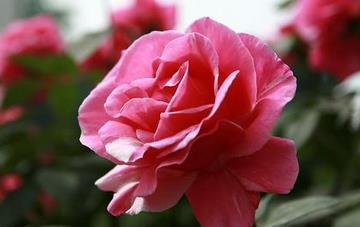
After the Qingming Festival, it is a meticulous pruning of the rose out of the cellar, leaving the strong branches of the rose, and the other horizontal branches, weak branches, cross branches, and overdense branches should be cut off, and the selected branches should be selected from the base with 3 color and 5 bud holes, and all the above branches should be cut off, so that the plant can absorb a lot of nutrients from the soil and provide long-term growth needs of leaf buds and flower buds that leave branches after pruning. Remember to prune the buds after germination, and the late pruning affects the first flowering, which requires a high degree of consistency in growth. Each plant can leave 5 main branches with a maximum of 7 branches.
If the potted rose is not dry or watered, it will be thoroughly watered. The summer weather is hot, the evaporation capacity is big, the potted plant watering water should be more, especially in the evening one time should irrigate enough. Rose grows poorly and blossoms less when the temperature exceeds 30 ℃. Some people think that it is due to lack of fertility, so they apply more topdressing, on the contrary, it is bad. In the middle of summer, we generally do not topdressing, but only apply thin fertilizer frequently to the sturdy branches, once a week, twice a week. If we can take proper shade after 11:00, and bask in the sun again after 4 p.m., to avoid the hot temperature at noon, it can also withstand the weaker sunshine in the afternoon, which is conducive to photosynthesis and accumulate nutrients for the next crop of flowers. Fertilization can be applied after pruning, and 50% of human feces and urine are mixed with 2% superphosphate. In the middle of February, 3% of human feces and urine or 1% urea can be applied, or urea can be applied before and after rain. It is not suitable to apply fertilizer when the new shoots are red. At this time, fertilization leads to young root injury, wilting or stopping plant growth, so special attention is paid to it.
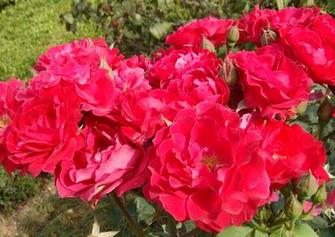
The rose also needs to be pruned in the middle, mainly cutting off the sprouting branches of the grafted rootstocks, cutting off the residual flowers and sparse buds with leaves after flowering, cutting the weak flower branches from the base after the first crop of flowers, and the other sturdy flower branches, then cut off from the residual flowers under 2 murine leaves and 3 leaves, and the second crop flowers can still be pruned by the method of thinning weak branches, leaving strong branches and strong buds.
Rose also needs to be pruned once before overwintering, but not prematurely. When pruning rose, not only strong branches should be selected, but also attention should be paid to the uniformity of principal and subordinate branches. Large flower varieties should have 6 strong branches, each branch should be pruned with a lateral buds at 30,000,000 m and cut off the upper branches. For vine and rattan varieties, the old branches, weak branches, disease and insect branches were removed.
Open field cultivation
Rose planted in open field has developed root system, rapid growth, strong plant, small flowers and high ornamental value. in management, cultivation measures are selected according to different types, growth habits and geographical conditions, and the cultivation land is high, sunny and well ventilated. the soil is slightly acidic. During cultivation, the soil was deeply ploughed and organic fertilizer was applied as base fertilizer. The planting density of upright varieties was 75 cm x 75 cm, the plant-row spacing of expansive varieties was 100 cm x 100 cm, the plant-row spacing of vertical varieties was 40 mm x 50 mm, and that of rattan varieties was 200 mm x 200 cm.
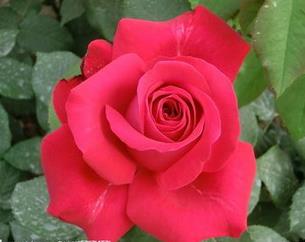
Matters needing attention in the cultivation of rose
First of all, we must choose the basin and prepare the soil. Planting rose pots should be tile pots, ceramic pots, plastic pots and so on because of poor air permeability, generally should not be used. One to two-year-old rose seedlings generally use a 20-meter tile basin is more appropriate, the balcony rose can also be appropriately larger, the soil on the basin should be loose, breathable, humus soil, horse dung soil should be used when there are conditions, sandy loam soil can also be used with sand, coal ash, sawdust and other loose substances, in order to facilitate drainage, can not directly use pastoral soil.
The bottom of the basin should be covered with tiles and applied with base fertilizer. The base fertilizer should be slow-acting fertilizer, such as horseshoe, hoof, ox horn and so on. Bone meal is also a good base fertilizer. Must not apply chemical fertilizer, fish belly, chicken intestines, hemp residue, soybean and other quick-acting but not fully mature fertilizer in the basin soil, so as to avoid urgent fertilizer and affect the growth of new roots. When the soil is on the basin, the soil should not be filled too full, and the soil surface should be left with a margin of about 3 meters from the edge of the basin to facilitate watering.
After putting on the basin, you should pour enough water, and put the basin in a warm and sunny place, and you should pay special attention to preventing wind after putting on the basin.
After putting on the basin, you should spray once to control diseases and insect pests, you can spray stone-sulfur mixture, Bordeaux liquid to prevent disease, and use permethrin, triclofenac to control aphids, red spiders and other insect pests.
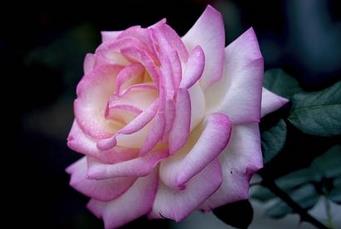
The rose on the basin should pay attention to shaping and breaking buds. Generally, the upright rose should retain the lateral buds as far as possible, while the expanded rose can leave the medial buds to make the tree round. Do not leave too many buds in each pot, generally leave 3 to 4 strong sticks in each pot, 1 to 2 strong buds in each pot, 4 to 5 buds in each pot is enough, the rest of the buds should be broken off, do not be a pity, such as grafted seedlings should pay more attention to the removal of rootstock buds.
Watering should be "wet and dry". Because the roots and leaves are not released after potting, water should be properly controlled to promote the growth of new buds. Topdressing can not be too early, after budding, you can apply some hemp residue or liquid fertilizer. In May, the rose will bloom brightly.
Introduction to the main species of Chinese rose
The main types of rose flowers are edible rose, rattan rose (CI), large flower perfume rose (cut rose) (HT), abundant rose (F/FI), mini rose (min), tree rose, strong flower rose (Grl), shrub rose (sh), ground cover rose (Gc) and so on.
Edible rose
Damascus rose rose has pure fragrance and high oil yield. It can be made into rose fragrant tea (also smoked tea) by drying, which is the best among many varieties of edible, medicinal, health care and beauty flowers.
Large flower perfume rose (HT)
There are many varieties, which is the main part of modern rose. It is characterized by strong plants, single or group flowers, large flowers, elegant and beautiful flowers, numerous, bright and bright flowers, fragrant smell and strong ornamental.
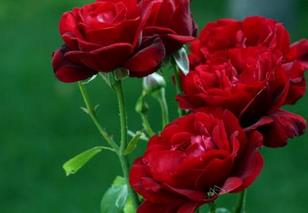
Fujimoto rose (CI)
Fujimoto rose, a rookie of greening, has a well-developed root system and strong resistance, and its branches germinate rapidly and grow strongly. there are 8 main branches germinating every year, and each main branch is an open branch with a maximum annual growth rate of 5 meters. It has a strong ability to resist disease. Extensive management, resistance to pruning, rich flower patterns, continuous flowering in the four seasons (some of them bloom in one season or two seasons), bright colors, unrestrained flowers, long flowering period and rich aroma. The flowers and colors are scarlet, bright red, bright red, pink, golden yellow, orange, complex color, pure white and so on. Biennial internodes sprout, bloom all over the body and have many flower heads, which can form the landscape of flower ball, style, flower wall, flower sea, flower waterfall, arch shape, corridor shape and so on.
Fenghua rose (F / fi system)
Fenghua rose expansion growth, flower heads into aggregates, cold resistance, high temperature resistance, drought resistance, waterlogging resistance, disease resistance, strong adaptability to the environment. Widely used in urban environmental greening, layout of garden flower beds, highways and so on.
Miniature rose (Minxian)
The new variety of rose family, its plant type is short, spherical, many flower heads, because of its unique character, also known as "diamond rose". It is mainly used for potted ornamental plants, decorating lawns and arranging patterns.
Tree rose
Tree-shaped rose, also known as rose tree, rose tree, it is through more than two grafting means to achieve the standard upright trunk, crown. Now the specification of tree-shaped rose (0.4 meters high, 5 meters dry stem).
Advantages: the ornamental effect is unique, noble and elegant, hierarchical, refreshing in the visual effect; various shapes, such as spherical shape, fan type, waterfall type, miniature, etc.; it not only retains the advantages of the general rose, such as strong flower fragrance, long florescence and various colors, but also shows more novel, more noble and more enthusiastic, so it has higher aesthetic value.
Greening is widely used around the city, parks, scenic spots, community courtyards and other places with green space, tree rose can play the finishing touch of the beautification effect.
The Corolla of tree-shaped rose with strong adaptability is farther from the ground than ordinary flowers and is not easy to be infected with soil diseases and insect pests; the trunk is derived from rose, with developed root system and strong vitality, especially in areas with high alkalinity, it is difficult to plant ordinary rose, and tree-shaped rose fills its blank.
In order to avoid fertilizer and affect the growth of new roots, the soil should not be too full when it is put on the basin, and the soil surface should be left with a margin of about 3 meters from the edge of the basin to facilitate watering.
After putting on the basin, you should pour enough water, and put the basin in a warm and sunny place, and you should pay special attention to preventing wind after putting on the basin.
After putting on the basin, you should spray once to control diseases and insect pests, you can spray stone-sulfur mixture, Bordeaux liquid to prevent disease, and use permethrin, triclofenac to control aphids, red spiders and other insect pests.

The rose on the basin should pay attention to shaping and breaking buds. Generally, the upright rose should retain the lateral buds as far as possible, while the expanded rose can leave the medial buds to make the tree round. Do not leave too many buds in each pot, generally leave 3 to 4 strong sticks in each pot, 1 to 2 strong buds in each pot, 4 to 5 buds in each pot is enough, the rest of the buds should be broken off, do not be a pity, such as grafted seedlings should pay more attention to the removal of rootstock buds.
Watering should be "wet and dry". Because the roots and leaves are not released after potting, water should be properly controlled to promote the growth of new buds. Topdressing can not be too early, after budding, you can apply some hemp residue or liquid fertilizer. In May, the rose will bloom brightly.
Introduction to the main species of Chinese rose
The main types of rose flowers are edible rose, rattan rose (CI), large flower perfume rose (cut rose) (HT), abundant rose (F/FI), mini rose (min), tree rose, strong flower rose (Grl), shrub rose (sh), ground cover rose (Gc) and so on.
Edible rose
Damascus rose rose has pure fragrance and high oil yield. It can be made into rose fragrant tea (also smoked tea) by drying, which is the best among many varieties of edible, medicinal, health care and beauty flowers.
Large flower perfume rose (HT)
There are many varieties, which is the main part of modern rose. It is characterized by strong plants, single or group flowers, large flowers, elegant and beautiful flowers, numerous, bright and bright flowers, fragrant smell and strong ornamental.

Fujimoto rose (CI)
Fujimoto rose, a rookie of greening, has a well-developed root system and strong resistance, and its branches germinate rapidly and grow strongly. there are 8 main branches germinating every year, and each main branch is an open branch with a maximum annual growth rate of 5 meters. It has a strong ability to resist disease. Extensive management, resistance to pruning, rich flower patterns, continuous flowering in the four seasons (some of them bloom in one season or two seasons), bright colors, unrestrained flowers, long flowering period and rich aroma. The flowers and colors are scarlet, bright red, bright red, pink, golden yellow, orange, complex color, pure white and so on. Biennial internodes sprout, bloom all over the body and have many flower heads, which can form the landscape of flower ball, style, flower wall, flower sea, flower waterfall, arch shape, corridor shape and so on.
Fenghua rose (F / fi system)
Fenghua rose expansion growth, flower heads into aggregates, cold resistance, high temperature resistance, drought resistance, waterlogging resistance, disease resistance, strong adaptability to the environment. Widely used in urban environmental greening, layout of garden flower beds, highways and so on.
Miniature rose (Minxian)
The new variety of rose family, its plant type is short, spherical, many flower heads, because of its unique character, also known as "diamond rose". It is mainly used for potted ornamental plants, decorating lawns and arranging patterns.
Tree rose
Tree-shaped rose, also known as rose tree, rose tree, it is through more than two grafting means to achieve the standard upright trunk, crown. Now the specification of tree-shaped rose (0.4 meters high, 5 meters dry stem).
Advantages: the ornamental effect is unique, noble and elegant, hierarchical, refreshing in the visual effect; various shapes, such as spherical shape, fan type, waterfall type, miniature, etc.; it not only retains the advantages of the general rose, such as strong flower fragrance, long florescence and various colors, but also shows more novel, more noble and more enthusiastic, so it has higher aesthetic value.
Greening is widely used around the city, parks, scenic spots, community courtyards and other places with green space, tree rose can play the finishing touch of the beautification effect.
The Corolla of tree-shaped rose with strong adaptability is farther from the ground than ordinary flowers and is not easy to be infected with soil diseases and insect pests; the trunk is derived from rose, with developed root system and strong vitality, especially in areas with high alkalinity, it is difficult to plant ordinary rose, and tree-shaped rose fills its blank.
Related
- Wuhan Hospital Iron Tree Blooming Result Was Instantly Frightened by the Gardener Master
- Which variety of camellia is the most fragrant and best? Which one do you like best?
- What is the small blue coat, the breeding methods and matters needing attention of the succulent plant
- Dormancy time and maintenance management of succulent plants during dormancy
- Minas succulent how to raise, Minas succulent plant pictures
- What are the varieties of winter succulent plants
- How to raise succulent plants in twelve rolls? let's take a look at some experience of breeding twelve rolls.
- Attention should be paid to water control for succulent plants during dormant period (winter and summer)
- Watering experience of twelve rolls of succulent plants
- Techniques for fertilizing succulent plants. An article will let you know how to fertilize succulent plants.



